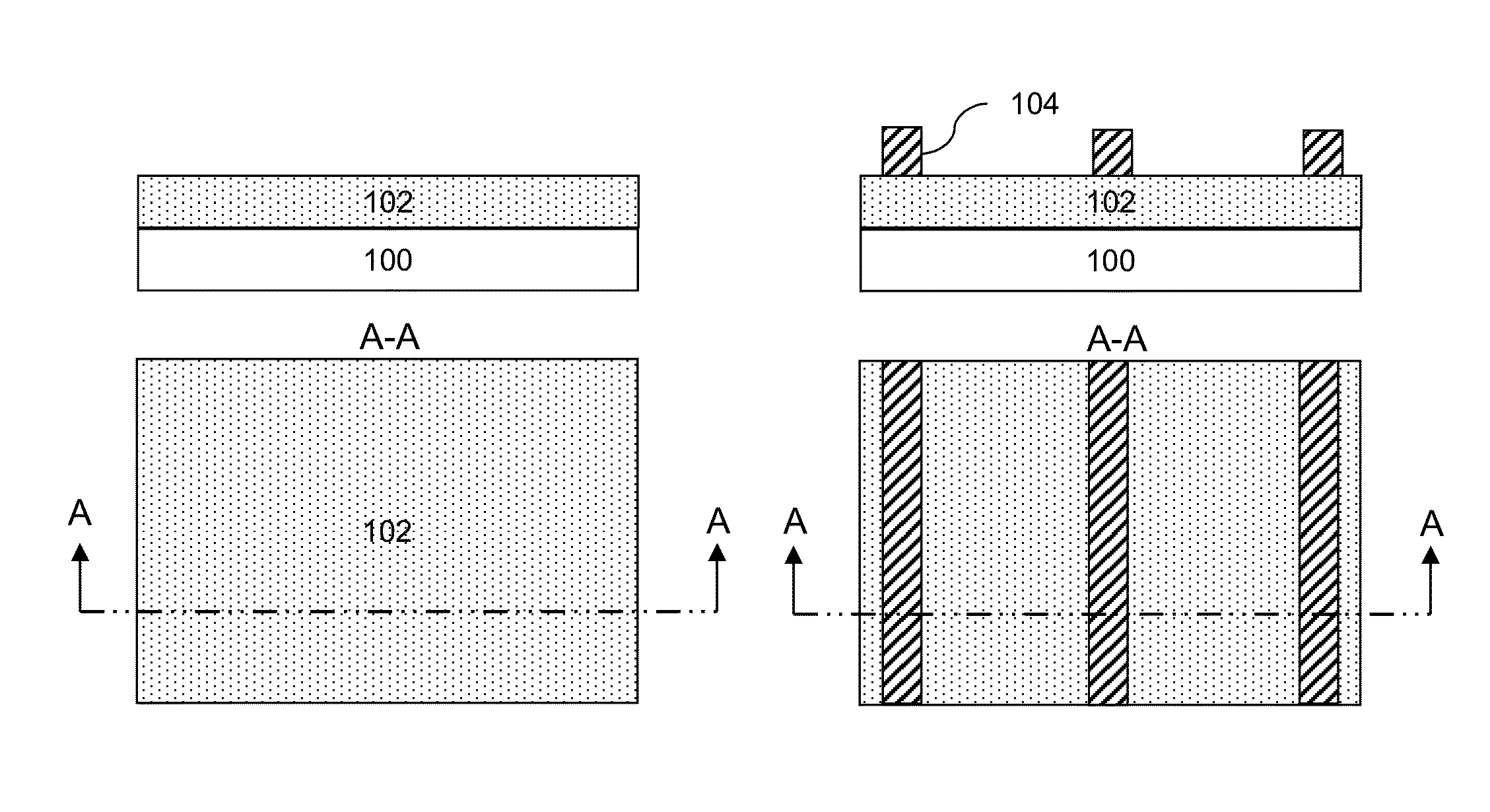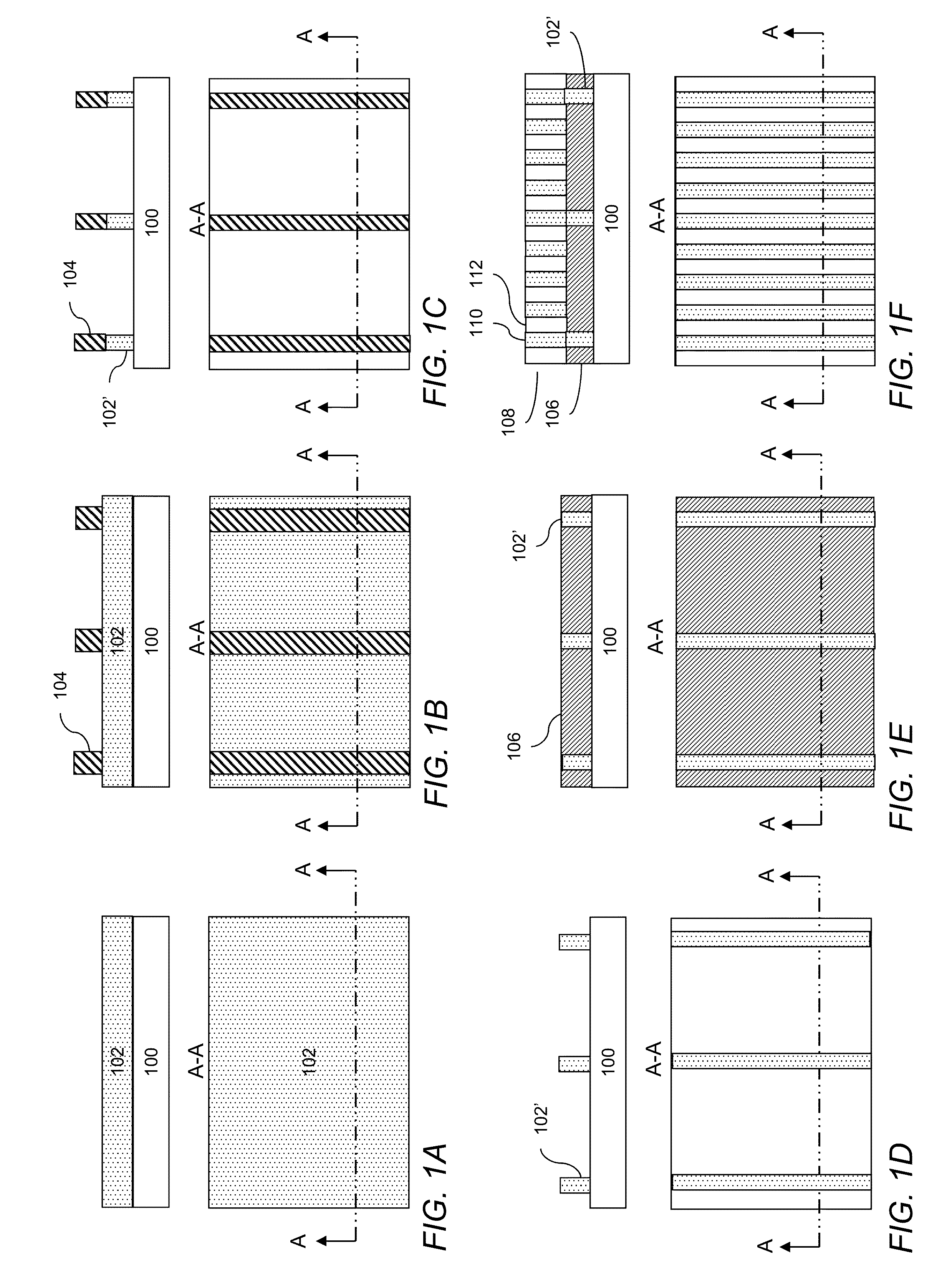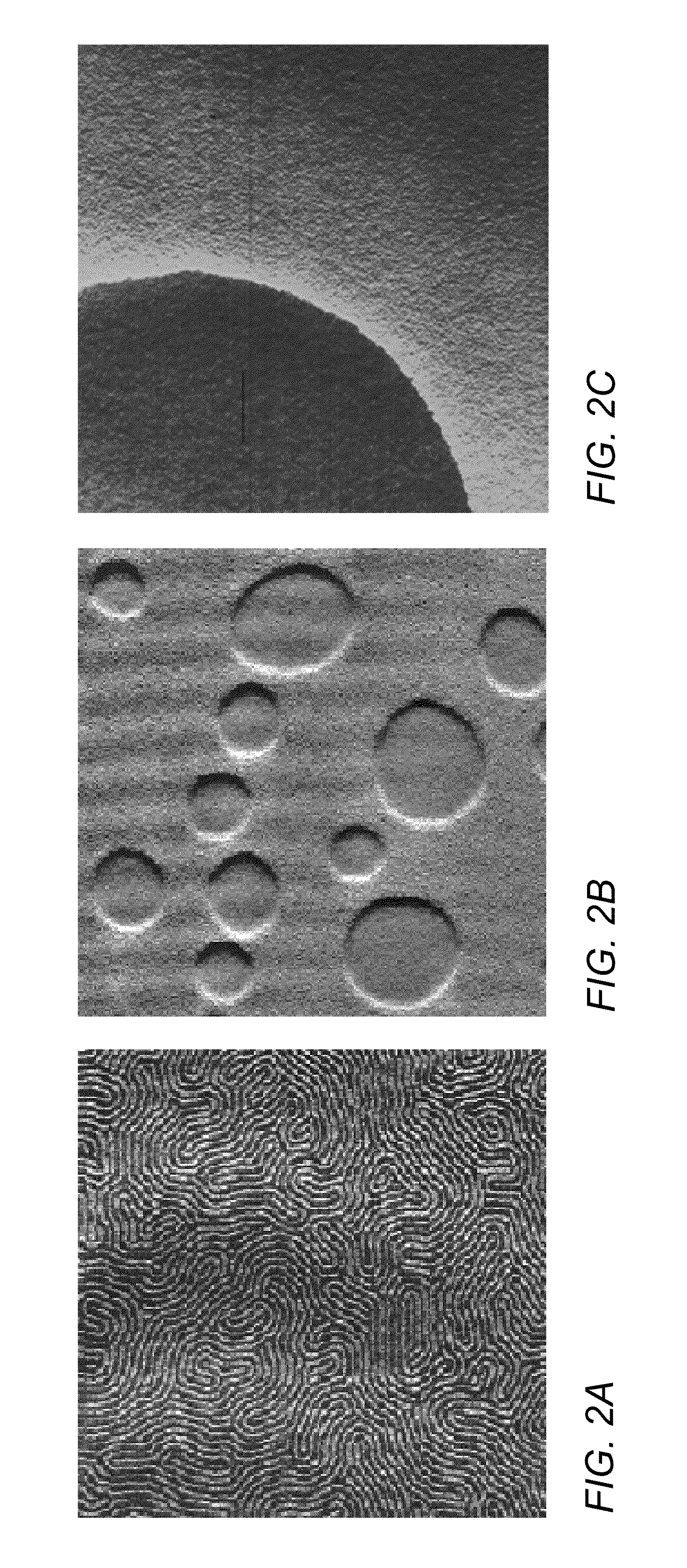Directed self-assembly pattern formation methods and compositions
a technology of composition and self-assembly, applied in the field of electronic device manufacturing, can solve the problems of inconvenient use of tools, difficulty in directly creating patterns beyond about 36 nm half-pitch line and space patterns, and inability to meet the requirements of the application of the technology,
- Summary
- Abstract
- Description
- Claims
- Application Information
AI Technical Summary
Benefits of technology
Problems solved by technology
Method used
Image
Examples
example 1
Crosslinkable Polymer 1 (CP1) (Comparative)
[0056]Styrene and 4-vinylbenzocyclobutene (VBCB) monomers were passed through an alumina column to remove all the inhibitors. 28.883 g of styrene, 1.116 g of VBCB, 0.225 g of N-tert-butyl-N-(2-methyl-1-phenylpropyl)-O-(1-phenylethyl)hydroxylamine, and 0.011 g of 2,2,5-Trimethyl-4-phenyl-3-azahexane-3-nitroxide were charged into a 100 mL Schlenk flask. The reaction mixture was degassed by three freeze-pump-thaw cycles and then the flask was charged with nitrogen and sealed. Subsequently, the reaction flask was heated at 120° C. for 19 hours. Precipitation was carried out in methanol / water (80 / 20). Precipitated polymers were collected by filtration, air-dried overnight, re-dissolved in THF, and re-precipitated into methanol / water (80 / 20). The final polymer was filtered, air-dried overnight and further dried under vacuum at 25° C. for 48 hours to give Crosslinkable Polymer 1 (CP1).
example 2
Crosslinkable Polymer 2 (CP2) (Comparative)
[0057]Styrene and 4-vinylbenzocyclobutene (VBCB) monomers were passed through an alumina column to remove all the inhibitors. 26.341 g of styrene, 3.658 g of VBCB, 0.229 g of N-tert-butyl-N-(2-methyl-1-phenylpropyl)-O-(1-phenylethyl)hydroxylamine, and 0.011 g of 2,2,5-Trimethyl-4-phenyl-3-azahexane-3-nitroxide were charged into a 100 mL Schlenk flask. The reaction mixture was degassed by three freeze-pump-thaw cycles and then the flask was charged with nitrogen and sealed. Subsequently, the reaction flask was heated at 120° C. for 19 hours. Precipitation was carried out in methanol / water (80 / 20). Precipitated polymers were collected by filtration, air-dried overnight, re-dissolved in THF, and re-precipitated into methanol / water (80 / 20). The final polymer was filtered, air-dried overnight and further dried under vacuum at 25° C. for 48 hours to give Crosslinkable Polymer 2 (CP2).
example 3
Crosslinkable Polymer 3 (CP3)
[0058]17.899 g of styrene and 2.101 g of 2-(1,2-dihydrocyclobutabenzen-1-yloxy)ethyl methacrylate (BCBMA) were dissolved in 30.000 g of propylene glycol methyl ether acetate (PGMEA). The monomer solution was degassed by bubbling with nitrogen for 20 min. PGMEA (15.097 g) was charged into a 250 mL three-neck flask equipped with a condenser and a mechanical stirrer and was degassed by bubbling with nitrogen for 20 min. Subsequently, the solvent in the reaction flask was brought to a temperature of 80° C. V601 (dimethyl-2,2-azodiisobutyrate) (1.041 g) was dissolved in 4.000 g of PGMEA and the initiator solution was also degassed by bubbling with nitrogen for 20 min. The initiator solution was added into the reaction flask and then the monomer solution was fed into the reactor drop-wise over a 3 hour period under rigorous stirring and nitrogen environment. After monomer feeding was complete, the polymerization mixture was left standing for an additional hour...
PUM
 Login to View More
Login to View More Abstract
Description
Claims
Application Information
 Login to View More
Login to View More - R&D
- Intellectual Property
- Life Sciences
- Materials
- Tech Scout
- Unparalleled Data Quality
- Higher Quality Content
- 60% Fewer Hallucinations
Browse by: Latest US Patents, China's latest patents, Technical Efficacy Thesaurus, Application Domain, Technology Topic, Popular Technical Reports.
© 2025 PatSnap. All rights reserved.Legal|Privacy policy|Modern Slavery Act Transparency Statement|Sitemap|About US| Contact US: help@patsnap.com



